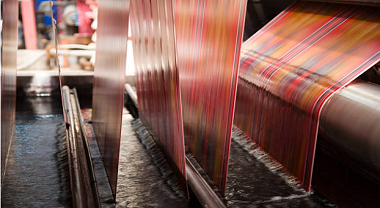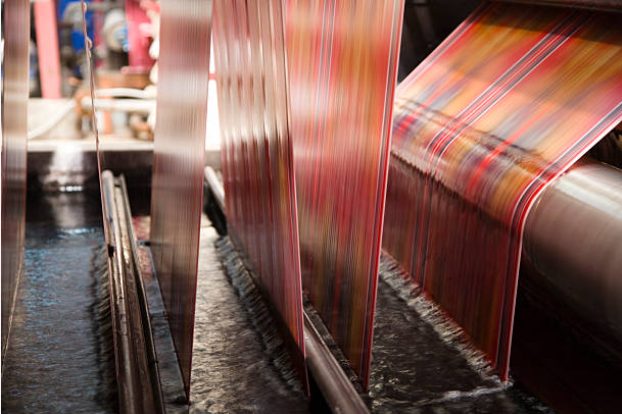Understanding the Relevance of IPR in the Fashion Industry
The intersection of fashion and IPR
Fashion, in 2021, has evolved to become a form of art that acts as a vehicle for cultural commentary and is not just merely restricted to the process of manufacturing apparel. Fashion designers and artists showcase their creative genius through conceptual fashion shows and apparel collections. As of 2019, the apparel market was valued at about 368 billion U.S dollars in the USA. In India, as of 2018, the industry was valued at over five trillion INR and is expected to reach about 223 billion dollars by 2021. Since fashion designers, textile manufactures, apparel companies and artists produce creations of the human intellect, Intellectual Property Rights play a significant role in the fashion industry. Designs or patterns that are created to stitch or print into textiles are protected with the help of design acts in several countries. More specifically, in India, the design act, 2000 protects designs that feature shapes, patterns, ornaments, or compositions of lines or colors applied to any article in two or three-dimensional forms. Protecting a design with the help of the design act can prevent unauthorized parties from creating counterfeit apparel and commercially exploiting them without the designer’s permission. For the same reason, several famous designers in India such as Anju Modi, Rohit Bal, Anita Dongre, and Masaba Gupta have legally protected their designs to avoid the creation of counterfeit apparel, copies, or knock-offs of their designs by unauthorized parties.
[Image Source: gettyimages]
Copyrights play a pivotal role in the fashion industry as well. Under the copyright act in India, an artist may protect an “original artistic work” if it is expressed in a tangible medium for over 60 years. However, it is pertinent to note that if an artistic work is already protected under the designs act, it cannot be protected under the copyright act. The fashion industry has witnessed several technological advancements over the years. With the introduction of technologies such as 3D printing or laser printing, patent laws have entered the fashion industry. Trademark laws play a prominent role in the fashion industry by legally protecting the logos of apparel manufacturers and fashion conglomerates. Protection of such trademarks is imperative since apparel brands greatly value their brand equity. Apart from patents, trademarks, and copyrights, trade secrets also play an essential role in protecting efficient business models and manufacturing processes that fashion conglomerates use.
Design act and its importance in the fashion industry
Designs play a pivotal role in the fashion industry. In India, the term “designs” under sections 2(d) of the design act, 2000 defines it as features of shape, configuration, pattern, ornament, or composition of lines or colors applied to any article by any industrial process or means. Under this section, a design can be applied to any article that is either two or three-dimensional in nature. Therefore, the designs act ensures the protection or registration of designs that may be aesthetic in nature that is applied to textiles. It is pertinent to note that, unlike copyright protection, the design may be protected under the act only if it is registered. If an unauthorized party attempts to create a counterfeit product or a knock-off of the original design, the infringer will be liable to pay monetary damages.
Relevance of copyrights in the fashion industry
Creating apparel or a design that can be tangibly represented will fall under the ambit of an “original artistic work” that can be protected by the copyright act. A designer may obtain legal protection over their works under section 15(2) of the copyright act if the apparel designs are not registered under the designs act. However, this comes with a limitation. If an unauthorized party creates over 50 copies of the designer’s creative work, the copyright protection that subsists over those designs will expire.
Significance of trade secrets in the fashion industry
Over the years, technological advancements have fuelled innovation in the fashion industry by introducing novel manufacturing methods, including software-based tools for designing, 3D printing methods, laser printing methods, machinery to promote large-scale manufacturing of textiles, and software-based business models. Such technologies add to the uniqueness and image of a particular brand. Several brands have also legally protected their technologies or business models as a trade secret. For instance, fashion conglomerate Zara devised an IT system that would reduce their apparel production cycle. The cycle was reduced from 4-12 months to 30 days. This system that Zara inculcated, which was protected as a trade secret, ensured that finished products would leave the factory and arrive at the outlets in under 48 hours. Several companies have also introduced virtual customization options that would help consumers design their own apparel. Such customization programs are legally protected. For instance, shirtsdotnet has legally protected software to help consumers design and purchase clothes through an online platform.
Patents and the fashion industry
Interestingly enough, recent developments in the fashion industry have attempted to interlink fashion with technology. This may include creating fabrics that change colors with the help of sunlight, are water or fire-resistant, or are incredibly durable. For instance, Novozymes, a biotech company, developed a technology wherein enzymes would treat denim jeans. As a result, the enzyme treatment would provide the jeans with a “stonewashed” worn-out look. Moreover, companies such as GrindiSrl have created and patented fabrics that are incredibly lightweight and are stain-resistant.
The importance of trademarks in the fashion industry
Trademarks play a vital role in the fashion industry. To some extent, trademark laws may prevent the creation of counterfeit items and knockoffs by unauthorized parties. Trademarking a word, symbol, design, or color combination exclusive to an apparel company can significantly contribute to its brand equity. Companies can sue parties who may have used identical marks for commercial purposes through effective trademark law enforcement in place.
As a matter of fact, the fashion industry is thriving with technological developments and innovations every year. Moreover, the industry has also managed to significantly contribute to the economic growth of its respective countries as well. However, several ramifications such as plagiarism and the unauthorized duplication of fashion items have plagued the industry. Thus, enforcing legal protection on fashion apparel and other by-products with the help of IP laws would be a prudent step that designers and fashion conglomerates can take to combat such issues effectively.
Author: Sanjana, a BBA LLB student of Symbiosis Law School (Hyderabad), in case of any queries please contact/write back to IP And Legal Filings at support@ipandlegalfilings.com.




